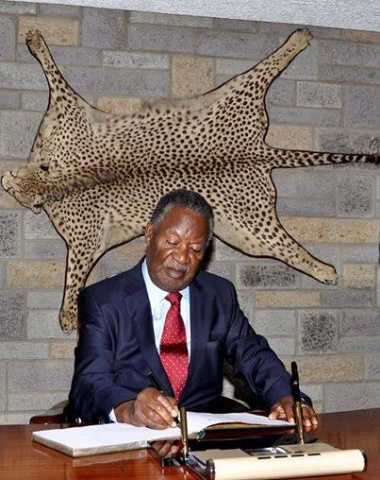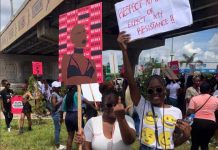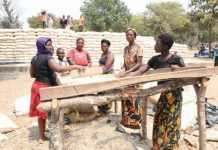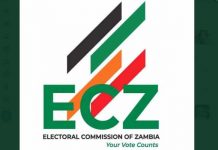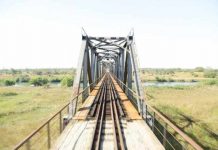Since Zambia declared independence in 1964, this normally quiet, copper-rich southern African nation – often called a model of democracy – has had four constitutions.
Now, student protesters and political activists are breaking the quiet and calling for a fifth national charter – a so-called “people-driven” constitution that allows a president to take power only after winning an outright 50-plus percent of the vote.
Zambia’s president Michael Sata promised a new constitution as far back as his election in 2011, and a draft was finished months ago. But the draft and the plan for its adoption never seems to reach the daylight, let alone a parliamentary vote.
Last month, the issue hit a boiling point: Opposition members walked out of parliament on Feb. 26, and 300 police then surrounded the building to preserve peace. The police remain deployed, student protesters and civic groups are still on the street, and parliamentary business is at a standstill.
“The draft constitution has been completed and we want this government to release it, give us its road map and speed up the process. We want Zambians to get the constitution they want and no amount of intimidation will stop us,” says opposition member Garry Nkombo of the United Party for National Development in a Monitor interview.
Although President Sata has done much to fulfill campaign promises like holding local and foreign investors accountable for improved working standards and less exploitive policies – he seems to be rethinking the promise of a revised constitution. His new line of approach is that Zambia already has a functioning constitution and does not require a new one.
“You are always talking about a ‘people-driven’ constitution. But where did you see an ‘animal-driven’ constitution? Bring it to me so that we can compare with the one we have,” Sata recently said in making light of increased calls for a new constitution.
Under the present constitution, a plethora of political parties compete and the new president is the leader of the party that scores highest in national elections. Sata won the presidency in 2011 with 42 percent. That figure however would not get him back into power under the new constitution, which would require a second run-off election between the top scoring parties from round one if there is no outright winner.
The current protests started Feb. 24, after Justice Minister Wynter Kabimba failed to address the question of when the government would release the draft constitution and provide its adoption road-map. In the wake of the Feb. 26 protest in parliament, University of Zambia students also protested as did other opposition parties and civil society groups.
“We are behind MPs in this fight and we will ensure government gives us a people driven-constitution this time around. It was their promise,” says McDonald Chipenzi, executive director of the Forum for Democratic Process, a civil society group.
Since independence in 1964, Zambia has had five presidents and four constitutions and has peacefully transferred power – a development that has earned it notice as a progressive democracy. Sata is reputed to understand the damage a prolonged political standoff can have, and at a March 6 event for diplomatic corps and international organizations he spoke of a commitment to a constitutional review process.
“Government will consider the recommendations because we have to factor the logistical and financial repercussions in order not to derail other pressing developmental projects,” according to presidential spokesperson George Chellah.

 JOIN DRIVERN TAXI AS PARTNER DRIVER TODAY!
JOIN DRIVERN TAXI AS PARTNER DRIVER TODAY!